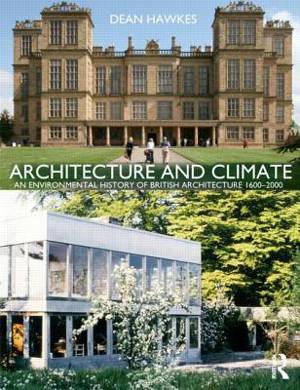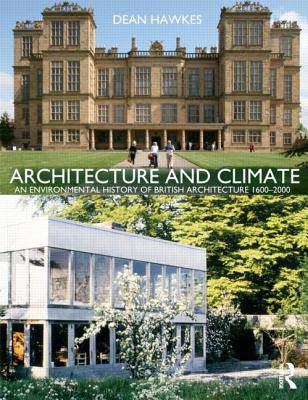
- Retrait gratuit dans votre magasin Club
- 7.000.000 titres dans notre catalogue
- Payer en toute sécurité
- Toujours un magasin près de chez vous
- Retrait gratuit dans votre magasin Club
- 7.000.000 titres dans notre catalogue
- Payer en toute sécurité
- Toujours un magasin près de chez vous
Architecture and Climate
An Environmental History of British Architecture 1600-2000
Dean HawkesDescription
This book traces the evolving relationship between the architecture and climate of Britain from the late sixteenth to the twentieth century. Through detailed studies of buildings by major architects it explores how the unique character of the climate of the British Isles has had a fundamental influence on the nature of buildings of all kinds and periods, in both country and city.
Based on extensive documentary research and on first-hand analyses of significant buildings, this book combines architectural history with the parallel fields of climate history and the representation of environment in literature and the fine arts. It spans the period in British architectural history from the late sixteenth century to the twentieth century - from the buildings of the greatest architect of the Elizabethan age, Robert Smythson, to the twentieth century work of Alison and Peter Smithson.
Copiously illustrated with drawings and photographs, including a colour plate section, this book brings a historical dimension to the appreciation of the environment in architecture and, equally, introduces an environmental dimension to the study of the history of architecture.
Spécifications
Parties prenantes
- Auteur(s) :
- Editeur:
Contenu
- Nombre de pages :
- 270
- Langue:
- Anglais
Caractéristiques
- EAN:
- 9780415561877
- Date de parution :
- 19-01-12
- Format:
- Livre broché
- Format numérique:
- Trade paperback (VS)
- Dimensions :
- 188 mm x 246 mm
- Poids :
- 589 g

Les avis
Nous publions uniquement les avis qui respectent les conditions requises. Consultez nos conditions pour les avis.






